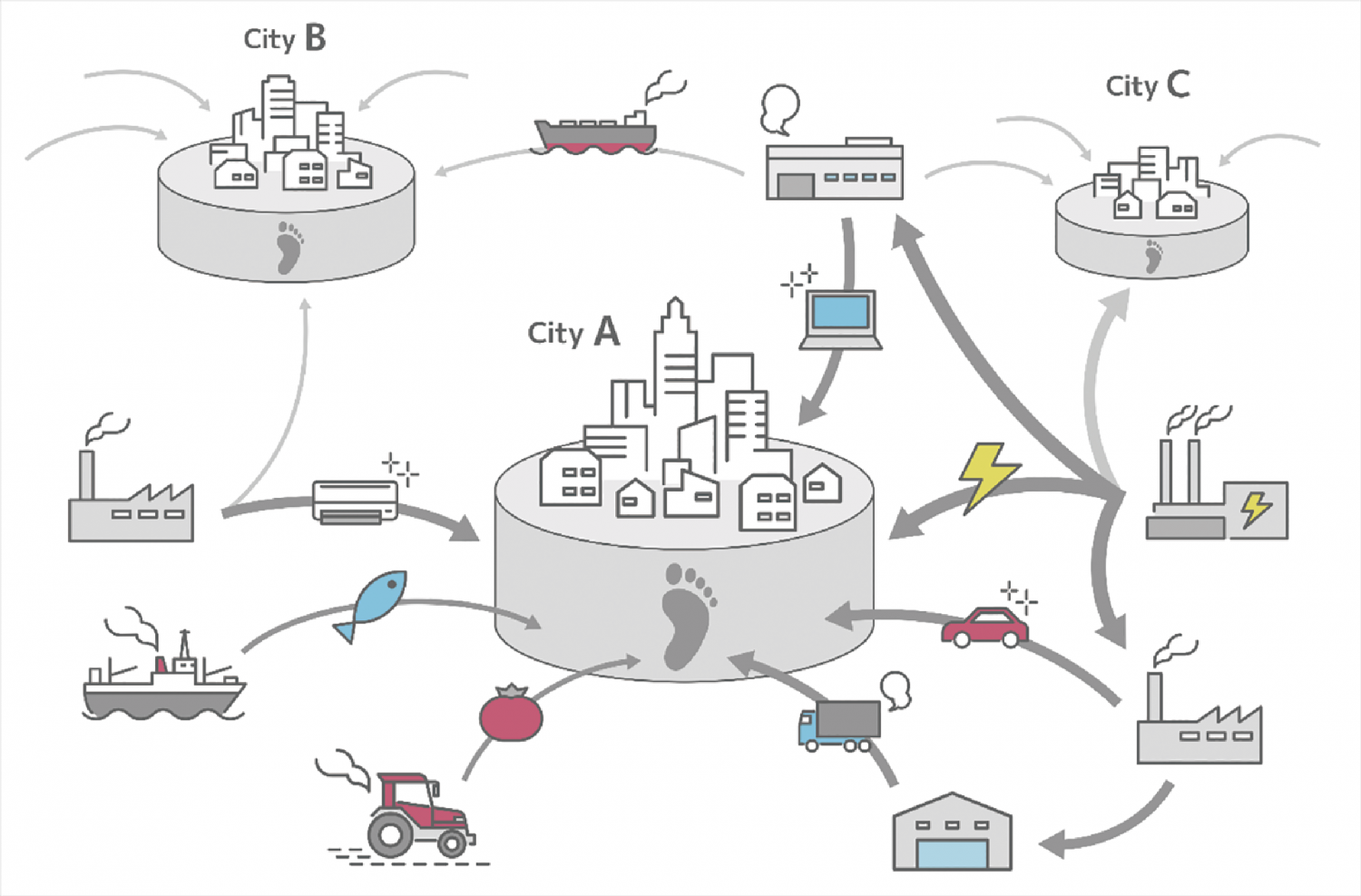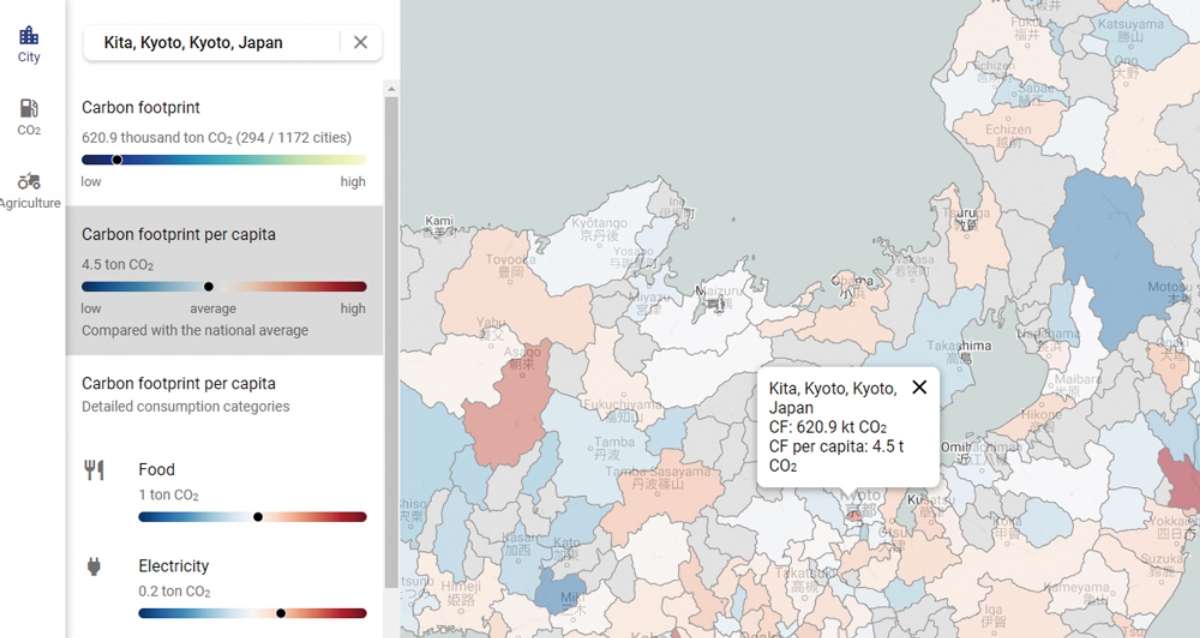.jpg)
Fisical Year Completed
2023
Supply Chain Project
- Related links
Mapping the Environmental Impact Footprint of Cities, Companies, and Households
Abstract
Rapid economic growth in China and other developing countries due to expanding global supply chains is causing severe environmental burdens. These burdens, such as PM2.5 emissions, have a critical effect on health hazards and other environmental problems, but the full extent is unknown. This project investigated the effects of global supply chains in cities, companies, and households on the environment.
Overview of Research Results
In previous research, we were able to quantify the amount of carbon dioxide emitted through the supply chain in urban and household consumption. Initially, we used micro-consumption data to elucidate the carbon footprint of cities and households. Furthermore, we estimated Scope 3 emissions for companies using financial information at the corporate level. Additionally, we addressed various environmental issues beyond carbon dioxide through the supply chain. For example, we successfully mapped out the extent to which consumption in various countries leads to deforestation through the importation of timber and food. These research findings have been published in academic journals such as “Environmental Research Letters,” “One Earth,” “Nature Ecology & Evolution” and “PNAS.”
Our concept of global environmental studies
Many people know from the news that global environmental problems are becoming extremely serious. For example, they may have read news about air pollution from PM2.5 in China and India causing deaths, or about many species in rainforests in Southeast Asia and the Amazon in South America under the threat of extinction. However, can we simply consider these problems to be confined only to China, India, Southeast Asia and South America? When we consider why environmental problems occur in those areas, we can see the solutions to these issues and how we need to be involved. We have conducted research to link the worsening global environmental issues with corporate procurement, urban and household consumption, and to explore solutions derived from these connections.
 Figure 1 Cities like Kyoto are not directly creating environmental burdens but are emitting them outside the city through the importation of products and services. We aim to clarify this situation.
Figure 1 Cities like Kyoto are not directly creating environmental burdens but are emitting them outside the city through the importation of products and services. We aim to clarify this situation.
New connections
We have created connections with companies, NGOs and city policy makers, and we believe that new networks will further expand based on future research results.
News
-
{{ data.disp_date }}
{{ data.content }}
Project Leader
KANEMOTO Keiichiro
Evaluation by an external evaluation committee
Research schedule
| 2017 | 2018 | 2019 | 2020 | 2021 | 2022 | 2023 |
|---|---|---|---|---|---|---|
| FS1 | FS/PR | FR1 | FR2 | FR3 | FR4 | FR5 |
